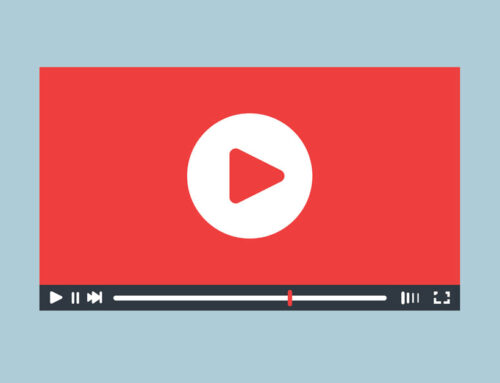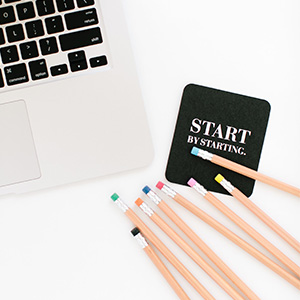To know what image SEO is, you gotta know what SEO is. SEO is search engine optimization. It’s what allows the search engines (Google) to push your website forward when someone (your target audience) types a query into the search bar.
Getting this kind of treatment from Google is the goal. So, getting an SEO strategy in line is necessary. Part of that strategy is your image SEO.
What’s image SEO, you ask?
All this means is that your images must be optimized for search engines.
Sound too techy for you?
It’s not. Promise.
Maybe you’re thinking now that you’ll just remove or reduce images on your website because it’s too much work.
Don’t do that.
Images are crucial to website performance.
People love images.
Do not underestimate their importance.
In this post, we’ll talk about your website images– pictures, infographics, charts, etc.– and how they can help you win at SEO big time.
What is alt text?
Alt text (or alt tags) stands for alternative text and is used in your HTML code. It offers descriptions of your images and is required for those who are unable to view the images; essentially, it tells the user what the image is.
When you drop your image onto your page, it automatically comes with coding (usually random letters and numbers); you just need to ramp it up some. And by that, we mean make it make sense.
The way to get to your alt text differs depending on the platform you’re using. But it’s simple no matter where you are. In most cases, once your image is in, right-click on it. You’ll see a window pop up, and Alt Text may be an option right there.
Or, you may need to take a couple additional steps to get to the Alt Text option, but if we can do it, you can do it. (Don’t forget, you can always Google how to do it from the platform you’re using.)
Once you’ve gotten to the Alt Text box, you have free reign to add a title and description to your image. How do you title and describe? Use your keyword(s) and be as specific as possible about the image.
For example, if you’re a chiropractor with a page dedicated to lumbar pain, you may offer acupuncture as a service. Perhaps you want to add an image of you performing it on a patient. So, you may title the image: Acupuncture to help end your low back pain. (Note, it’s not just titled: acupuncture)
Below is an example of HTML code:
<img src=”acupuncture.jpg” alt=”acupuncture to help back pain”/>
You do NOT have to code this yourself, so don’t panic.
Below are directions for adding image alt text on the most popular platforms (if your website is hosted by another platform, remember, Google is here for you, ask it how to do it on yours):
- Log in to your WordPress website to get to your dashboard
- Open the post or page to edit the content
- Click on the Image block to open your Image settings in the Block tab of the sidebar
- Add the alt text and the title attribute you want to use
- Click on “Update”
- Hit on “Edit” on the top left side of the site preview
- Double click on the image to get to the image options
- Change the file name to the alt text you want to be displayed
- Select save on the top left side
- Click on the image
- Click the Settings icon (the wheel)
- Enter a description of the image under “What’s in the image? Tell Google.”
- Add the tooltip text under “Does this image have a tooltip?” (a tooltip is the wording that appears when the cursor is on the image)
Next, you can add a brief description also:
Applying safe, natural acupuncture to the lower back can help reduce your back pain and promote a quick recovery as it nurtures a healthy lifestyle.
The thing to remember is that you know your business; you know what these images are intended to do, so create alt text that says it. You don’t have to make it more difficult than it is. Yes, it’s writing, and you’re not a writer, but, again, you know the significance of the image, so label it using descriptions that relate to that significance.
We briefly touched on this, but it bears repeating: your alt text is not a place for you to be general; in fact, the more specific you are, the better it is for your user and the search engines.
And why do you need to do all this? Let’s get into it.
Why do I need to add image SEO?
As we said above, SEO is what makes or breaks your website (and your visitors, your sales, your patients, your ROI), so if image SEO contributes to a better SEO campaign, doing it is a no-brainer. Plus, it’s easy, so there’s no reason not to.
Image SEO is important because it helps optimize the images found throughout your website. This is key to helping Google know what’s on your pages. The search engines don’t read the way we do, but their takeaway is much like ours.
If you want Google to show your website as a result to a user’s query, the more they know about a page, the better able they are to determine your match with a searcher. Your SEO will help them understand what you do and if your services will benefit the user.
Your image SEO is an extension of this. It promotes a better user experience, provides improved visibility and traffic, and ultimately strengthens your ranking.
Image SEO tips
Optimizing your images is more than just titling them and describing them.
Below are some tips to help you optimize your images:
- Add alt text (obviously). Make sure it’s got your keywords and is SEO friendly (no images with a bunch of letters and numbers as a name).
- Compress your images so they fit on the page correctly. This isn’t only about how it looks, but if the image is too big, it will make the page load slowly, and no one waits for pages to load anymore.
- Use your own images when possible. Stock photos can be used as fillers if you don’t have your own images yet, but unique photos of you, your team, your clinic or office, etc. are way better. If you’re using stock photos, ensure you’re not getting into copyright territory.
- Your images must perform well on mobile devices. This has to do with the loading speed, as well as placement. Just because the image looks great on a computer doesn’t mean it will on a phone.
Also, it’s important to mention that with advancements in AI and voice-activated searches, image descriptions go a long way to adding essential SEO elements to your page. It gives Google another reason to offer your website as a result because your images are clearly defined and understood.
Optimizing your images is plain, old smart business. Images play an integral role in your website; they provide a peek into who you are, and they give perspective into what you do and how you do it. Images attract attention. If you went to a page that was just a bunch of words, would you stay?
The perks of image SEO
By now, you should be a believer in the value of images. But if you don’t properly set them up, that value can be wasted. Image SEO is an excellent resource for you, your audience, and the search engines. It provides valuable insight into your company, and, the best part, it doesn’t take long to do.
If you have questions about your images, SEO, or image SEO, Propel Marketing & Design would love to chat. Book your discovery call, and let’s get you a higher ranking on Google!







